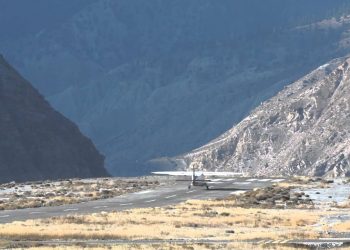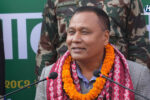Debates on revising Nepal’s non-aligned foreign policy have been circulating in recent years intending to manage our international lives as effectively as possible in the face of a shifting global environment.
Such discussion is essential because it can revitalize Nepali discourse on foreign policy. The political landscape of the world has fundamentally changed and it is incomparable to the eras of King Mahendra and B. P. Koirala.
Democracy, Development partners, Economic integration, diaspora, and the international labor movement were quite a few before then.
As a result, the aforementioned elements were not included in Nepal’s then foreign policy agenda. However, it is now vital to incorporate such aspects into our foreign strategy.
In this unstable world, when both of our neighbors, China and India, compete with one another and work together to further for achieving their own vested global objectives, we need a fresh perspective to observe our international existence.
The Nepali government has always had a survivalist mentality, and both of its neighbors see each other as big brothers in Nepal.
In the case of Nepal, Kathmandu’s foreign policy has always been on the radar of Delhi and Beijing, particularly since the country’s transition to democracy in the 1950s.
Since America has a large coastline spanning two oceans, she can easily use her maritime power (geography is destiny), in contrast to Russia which is entirely shut off from the sea and has challenging navigation.
In light of the shifting external environment, foreign policy is dynamic. Any country’s current foreign policy decisions are impacted by externalities.
Foreign policy should take into account how the world is evolving with regard to Nepal. In the meantime, Nepal’s foreign policy has been influenced by five new factors.
These include the following: Democracy, Economy (socio-cultural and geographic aspects), Donor and Lending agencies (like the USAID, World Bank, or ADB), and Labor relations with the gulf and Diaspora. Our current non-aligned foreign strategy must be adapted to these five new emerging dimensions.
Historically speaking our so-called non-aligned foreign policy has always double standard.
Either we had to move towards South for plains development( East-West Highway is a classic example) or North for geopolitical balancing.
Neither of the none has paid Nepal very well. In the 2015 economic blockade or Lipulekh disputes, the silence of our northern neighbor forced us to deal independently with the South.
Secondly, this non-aligned foreign policy is failing to address our concern and vested interest in the new emerging cold war season 2 ultimately between the US and China—Nepal’s location has been emerging as the ultimate playing field.
New determinants of foreign policy in Nepal
Democracy has been in Nepali public life’s lifeblood. It took Nepal more than 70 years to fight for it. We live in a liberal, multi-polar world where the majority of developed countries uphold democratic ideas and principles.
Even though they are distinctive features of the Western world, democracy and human rights have developed throughout the past 500 years via multiple revolutions, counterrevolutions, and wars.
This has been the foundation for 21st-century globalization. As a result, our DNA is specifically matched to the nation whose national characteristics wear a democratic garb.
Our culture is oriented north to south. The previous governance structure of the five development regions in past, which implicitly flows from north to south, has been accurately captured.
The Nepalese are the eleventh-largest immigrant group in Australia, accounting for 1.7% of all Australians born abroad and 0.5% of the country’s overall population.
Our guiding principles for Nepal’s existence are the integration of the country’s economy from North to South, which eventually links to our marine security in the Bay of Bengal.
For instance, the distance from India’s Haldia Port to Birgunj in Nepal is 818 kilometers, but the distance from Kathmandu to the closest Chinese port, Shenzen, is 2943 kilometers.
The 2012 book “The Revenge of Geography: What the Map Tell Us About Coming Conflicts and the Battle Against Fate” by Robert D. Kaplan provides a very good explanation of this.
Since America has a large coastline spanning two oceans, she can easily use her maritime power (geography is destiny), in contrast to Russia which is entirely shut off from the sea and has challenging navigation.
She has to rely on Turkey’s Bosporus strait for navigation. Geography took revenge on Russia so as with Nepal for making her totally dependent on the South and ultimately on the Bay of Bengal.
ADB, EU, Finland, France, Germany, INGOs, JICA, KOICA, Norway SDC, UK, UN, USAID, and the World Bank are the donor and lending organizations in Nepal that have provided us with enormous assistance for our national advancements.
The Asian Development Bank, The World Bank, The International Monetary Fund (IMF), The European Union, and The United Nations were the top disbursing multilateral partners in 2019–20, according to Development Cooperation Report, 2021. (UN).
Of the overall ODA, bilateral development partners provided 29.0%. The United States of America, the United Kingdom, India, China, and Japan were the top five bilateral development partners in terms of funding, listed in descending order.
Our labor links with Malaysia, Saudi Arabia, Kuwait, the United Arab Emirates, South Korea, and Qatar are a significant source of remittances entering Nepal and boosting the economy there.
As per Fact Nepal, more than 7 million Nepali are working in these five countries. According to NRB, Nepali migrant workers in Gulf nations send more than half of all remittances to Nepal.
Taking data from Nepal Rastra Bank, the Gulf region contributes 50.3% of all remittances to Nepal. An NRB study in 2020 stated that while Nepal received remittances of Rs. 304.97 billion, the amount sent by the Gulf nations was Rs. 153.26 billion.
Due to the tremendous growth of our diaspora in the US and Australia, these countries have a significant influence on how our foreign policy is developed.
From the period of the Qianlong Emperor in China and B.P. Koirala in Nepal and finally, to Babu Ram Bhattarai, China’s message regarding Nepal has been loud and clear—- building a greater trustworthy environment with its southern counterpart. The rest will be perfect.
According to Australian Home Affairs, there were 131,830 persons of Nepalese descent residing there as of June 30, 2010, which is five times the previous record of 27,200.
The Nepalese are the eleventh-largest immigrant group in Australia, accounting for 1.7% of all Australians born abroad and 0.5% of the country’s overall population.
Nepalese made up 282,385 people in the US, up from 95, 270 in 2015. These expanding diasporas are valuable resources and aid in influencing pro-Nepali policy in their host nations.
This was used by Indian Prime Minister Narendra Modi during his ‘Howdy Modi’ event in Houston, Texas, which drew more than 50,000 people.
Numerous Diaspora-based groups with an interest in foreign policy promote US foreign policy toward the target country in the US. One of the significant instances is the Israel Lobby.
Way Forward
In light of the above, Nepal’s foreign policy should now focus on the aforementioned 5 distinctive features to contextualize the current situation.
Here, the fundamental problem appears to be that Nepal’s constitutional provisions for foreign policy are non-aligned but the global political environment is evolving differently as a result of the ongoing conflict between the West and the rest.
In such cases, Nepal’s constitution’s foreign policy clause must be reconciled to reflect the evolving political landscape worldwide.
From the period of the Qianlong Emperor in China and B.P. Koirala in Nepal and finally, to Babu Ram Bhattarai, China’s message regarding Nepal has been loud and clear—- building a greater trustworthy environment with its southern counterpart. The rest will be perfect.









Comment